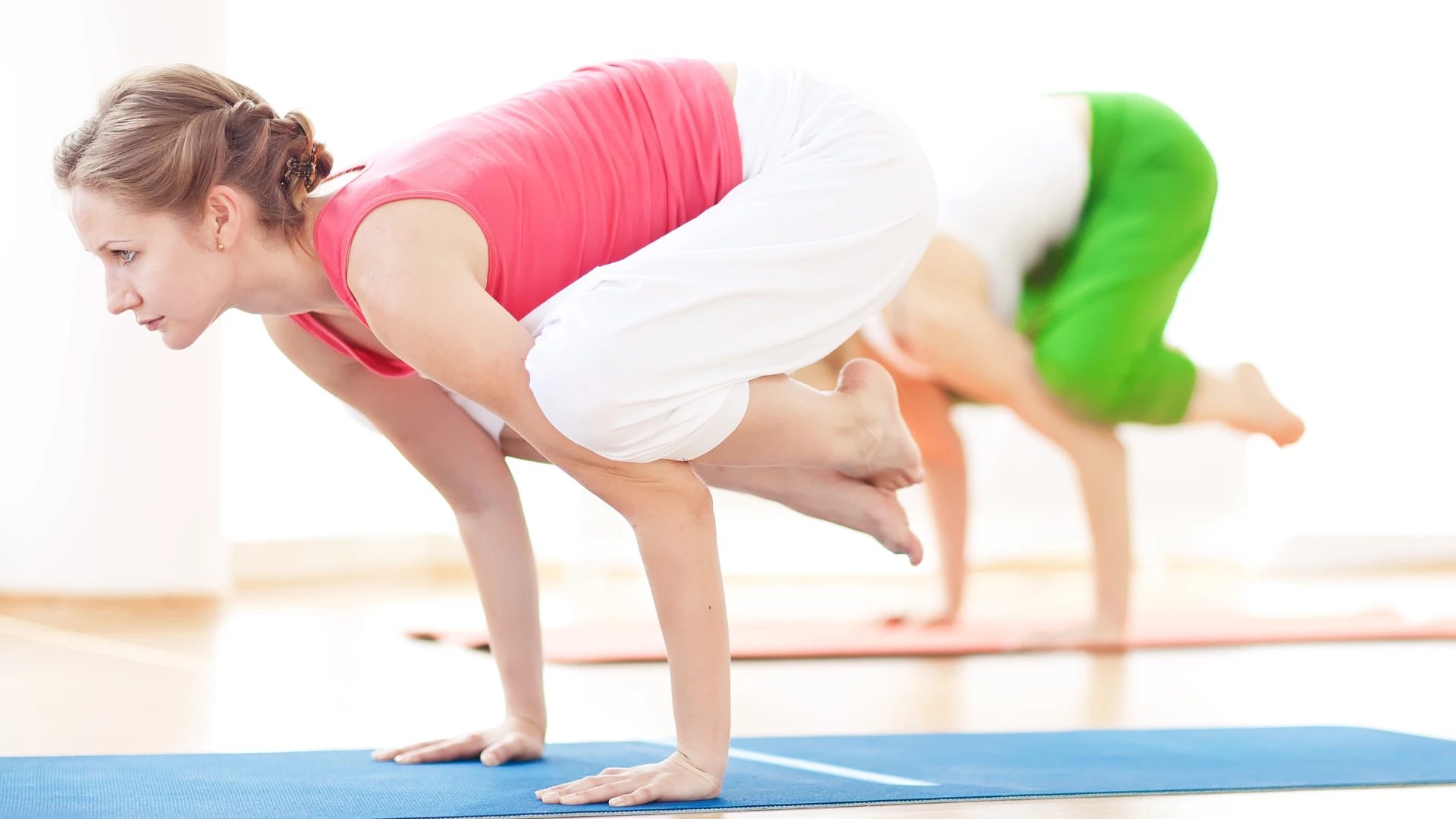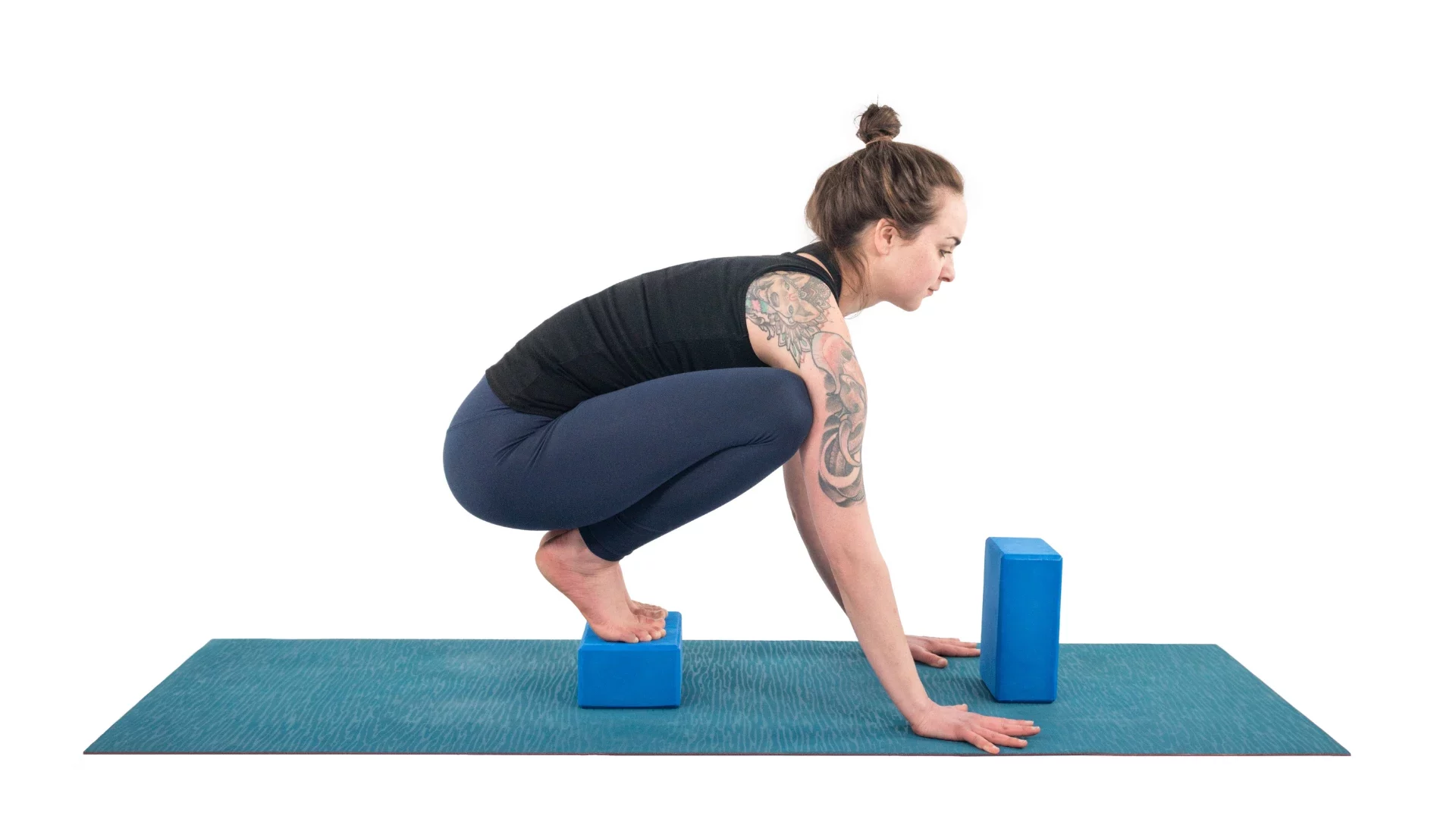Crow Pose (Kakasana): A Surprising Journey to Inner Strength

Article At A Glance
Crow Pose for beginners is a great pose for many reasons, including the surprising inner journey. It’s a challenging yoga pose but a great beginning arm balance. Try these steps to make Crow Pose easier for beginners.
Once we start practicing yoga, we quickly discover that yoga isn’t merely a physical practice. Instead, yoga offers an invitation to embark on a lifelong journey inward. The poses, which are only one aspect of the path of yoga, become a vehicle for self-discovery, cultivating inner strength, and developing greater confidence: Crow Pose for beginners is a great pose for many reasons, including the surprising inner journey.
Crow Pose (Kakasana) For Beginners
While frustrating at times, the art of performing complex yoga poses will often offer the challenge we need to move beyond our perceived limitations and develop a new level of confidence, self-awareness, and self-compassion.
For example, Crow Pose, known as Kakasana, is considered a beginning yoga arm balance. The shape is simpler than its more advanced cousin, the Crane Pose. Still, it requires the same mindful shift of weight from the feet to the hands, which demands as much attention and courage as any pose where our feet leave their familiar place on the ground.
Crow Pose in Sanskrit: The Meaning of Kakasana
Kakasana is derived from two Sanskrit words, “kaka,” meaning crow, and “asana,” meaning pose. So this yoga pose is named after the crow because its shape resembles the bird perched and ready to fly.
Hatha Yoga: Benefits of Crow Pose

In addition to encouraging our daring and challenging our balance, the Crow Pose has many physical and mental benefits, including:
- Crow Pose strengthens the arms, wrists, hip flexors, and abdominal muscles
- Practice yoga poses like Kakasana to stretch your upper back muscles
- This beginning yoga arm balance promotes coordination and keen proprioception
- Kakasana tones the pelvic floor muscles
- Build confidence and cultivate mental focus with yoga for beginners Crow Pose
Beginning Yoga: How to Practice Crow Pose

Compose yourself. You may be surprised when you notice you are floating above the ground. Follow these instructions to practice your beginning Crow Pose safely:
- Begin squatting with your heels together and your toes apart. Lift your heels and splay the knees apart enough to wriggle your trunk in between. Set the foundation for Crow Pose by placing your hands on the floor in front of your feet, shoulder-width apart, and slightly turned outward. Spread your fingers spread comfortably wide.
- Bend your arms and climb your knees onto the backs of your upper arms, somewhere between your elbow and shoulder. Gaze well beyond your hands at a point on the floor to shift your energy and weight forward rather than downward.
- Breathe gently. Shift your shoulders forward of your wrists. Press every segment of each finger evenly into the floor. Distribute your weight evenly into the circumference of each palm. Lift one set of toes any amount off the floor. After a moment, place them down and try the other foot. Stretch your toes while they float off the floor. After a couple of floats of each foot, hug the upper arms toward one another, shift your gaze upward, and lift both feet simultaneously to practice the Crow Pose.
- Once your feet are floating, draw the back of your pelvis toward your heels and your heels toward your buttocks to engage your abdominal muscles and make your shape more compact.
- Breathe and practice relaxing even as you discover you can balance on your hands. Soften your brow, jaw, and tongue as you feel your balance shifting over your hands. Press the floor down and steady your gaze.
- Hold the shape for a few breaths, then return to a squatting position, one foot at a time or simultaneously.
Yoga Tips for Beginners Practicing Crow Pose (Kakasana)
- Start with a pillow, block, or folded blanket on the floor in front of you under your forehead to help you feel more secure. Many fear falling on our faces (metaphorically and literally), and it’s not a bad idea to be ready, just in case! As Patanjali states in the Yoga Sutra (2:16), “Future pain should be avoided.” Why not start with a pillow or folded blanket on the floor in front of you to help you feel more secure? Take good care of yourself.
- Keep your elbows close to your trunk. As you hug the upper arm muscles, slide your shoulders away from your neck. Make space so you can breathe and relax within the muscular effort.
- Have a hard time getting your knees onto your upper arms? Set a block horizontally (on its lowest level) on your sticky mat. Mindfully climb your feet onto the block. Perch there with your heels lifted off the block. Now you can stack your knees on your arms from a helpful starting point.
The Importance of Equanimity in Yoga’s Crow Pose
With regular practice, even beginners will find that Crow Pose can be a powerful tool for self-discovery and inner strength. How we attempt a pose is more important than whether or not we strike the pose. Our journey to inner strength has more to do with attitude than achieving an end goal. What builds this inner strength is our capacity to learn, laugh, perhaps fall, and then be willing to try again. Know that practice is something we do for a long time, consistently, in all earnestness (Yoga Sutras 1:14). Practice leads us toward tranquility of mind and inner stability. There is no hurry. Balance comes and goes. What we are cultivating is equanimity. Being undisturbed by the result is the inner strength that blossoms into profound freedom.




